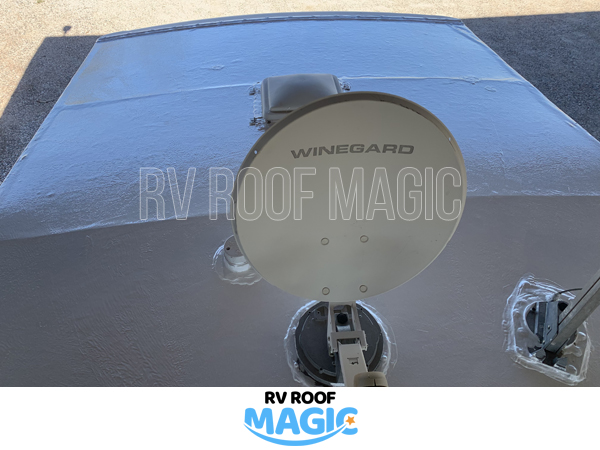As with any structure, RVs have several different types of roof materials to choose from. Vinyl, fiberglass, and aluminum are all options that are available, but the majority of people these days opt to choose the RV rubber roof instead. Why? Well, in addition to its superior durability and flexibility, it also offers several other benefits.
The benefits of having a rubber roof on your RV include:
- Lower costs for installation and maintenance
- Lighter weight, keeping the roof decking from failing due to weight issues
- Weather and impact resilience
- Less expensive repairs
- Longevity
With simple inspections, you can keep your rubber roof membrane in pristine condition. Of course, you will have to choose the type of rubber that you want to have installed. There are a few different options. You can choose TPO or EDPM sheeting, which applies like a plywood sheet. This is a simple, cost-effective product but it is also notorious for leak potential because of all the seams that have to be sealed.
You’ll also have to inspect all those seals more frequently and probably replace them more often when there are more of them to manage. The other option saves this hassle, but still gives you the durability and flexibility of rubber: liquid rubber roofing. This can be applied much like paint and it protects the entire roof in a single membrane. There are fewer issues with leaks because there are no seams.
Some people dislike rubber roofs because they are not as quiet as fiberglass (such as when it’s raining). This material also isn’t usually found on slide-outs because it would make the sliding process difficult. However, where it is found, it can be a great roofing product for those who choose it.
It’s also important to consider design elements and other factors in choosing the best roofing, whether that’s rubber or any other material. For example, an all-aluminum RV wouldn’t look right with a rubber roof when aluminum roofing is an option.
Rubber roofing can last for up to 20 years or more if it’s well-maintained. Make sure that you don’t park under trees if you can help it, check and clean the roof periodically, and perform regular inspections. With just these few steps, you’ll be able to enjoy your RV rubber roof for several years to come, no matter which exact type you end up choosing.


